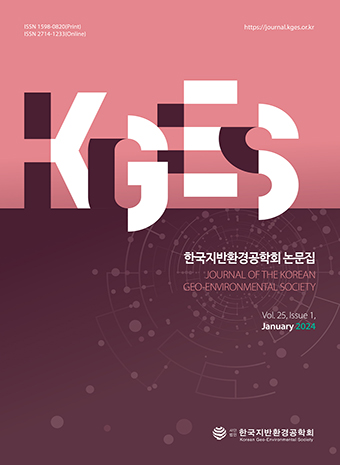Elise Kaartinen, Kyle Dunphy & Ayan Sadhu (2022), LiDAR-based structural health monitoring: applications in civil infrastructure systems, Sensors, Vol. 22, No. 12, Article 4610. https://www.mdpi.com/1424-8220/22/12/4610
10.3390/s2212461035746392PMC9228898Flyability. (2023), Flyability: Indoor Drones for Inspections in Confined Spaces, Retrieved., https://www.flyability.com
Joe Diekfuss & Jon Chapman (2017), Incorporating LiDAR and UAS Technology in the Inspection and Evaluation of Existing Structures, raSmith Engineering., https://www.rasmith.com
Ministry of Land, Infrastructure, and Transport (2012), Detailed Guidelines for Safety Inspection and Precision Safety Diagnosis: Commentary on Retaining Walls, Ministry of Land, Infrastructure, and Transport, pp. 11~62.
Moya, L., Yamazaki, F., Liu, W. and Yamada, M. (2017), Detection of collapsed buildings due to the 2016 Kumamoto, Japan, earthquake from Lidar data, Natural Hazards and Earth System Sciences, Vol. 17, pp. 157~167.
10.5194/nhess-2017-186Rail Engineer. (2024), Train-borne monitoring and infrastructure measurement systems. Rail Engineer. https://www.railengineer.co.uk/train-borne-monitoring
Yamazaki, F., Liu, W. and Horie, K. (2022), Use of multi-temporal LiDAR data to extract collapsed buildings and to monitor their removal process after the 2016 Kumamoto earthquake, Remote Sensing, Vol. 14, No. 23, Article 5970. https://doi.org/10.3390/rs14235970
10.3390/rs14235970- Publisher :Korean Geo-Environmental Society
- Publisher(Ko) :한국지반환경공학회
- Journal Title :Journal of the Korean Geo-Environmental Society
- Journal Title(Ko) :한국지반환경공학회 논문집
- Volume : 25
- No :12
- Pages :29-35
- Received Date : 2024-10-21
- Revised Date : 2024-10-30
- Accepted Date : 2024-11-20
- DOI :https://doi.org/10.14481/jkges.2024.25.12.29




 Journal of the Korean Geo-Environmental Society
Journal of the Korean Geo-Environmental Society





